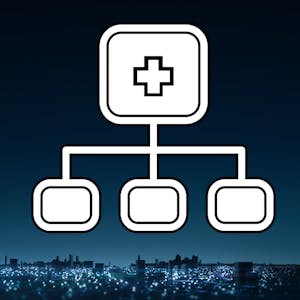Description
Understanding clinical terms and abbreviations commonly used in verbal or written communication in US hospitals is difficult. This course is intended for students of health care professions in the United States as well as international students and practitioners who want to become more familiar with clinical language in the United States. Others, such as caregivers and medical interpreters, who want to learn more about the terms and abbreviations used by health care providers will benefit from this course. The course provides visual and auditory learning experiences to help students understand terms and abbreviations commonly encountered on a general hospital unit in the United States. The learner has access to all content, including quizzes, at no cost. If you require a certificate, you can either apply for financial assistance or pay the fee. To learn more, go to the Financial Aid section and click Learn more and apply. (For this step, use a computer rather than a mobile device.)
Syllabus :
1. Introduction to Clinical Terms and Abbreviations
- Introduces the course and strategies for understanding the structure of clinical abbreviations and complex terms. In week 1 readings, we focus on learning abbreviations related to vital signs. Understanding the structure of abbreviations will help you to identify the meaning of abbreviations presented in this course, as well as those you encounter in the future.
2. Decoding Complex Medical Terms
- Decoding Complex Medical Terms
- Tour of the US Clinical Unit
- Abbreviations and Terms Related to Health Care Provider Titles
- Abbreviations and Terms Related to Electronic Medical Records
- Abbreviations and Terms related to the History and Physical Examination
- The Surgical Patient: Mrs. Gerto
- The Comatose Patient: Mr. Taggert
- The Medical Patient: Mr. Cope
3. Advanced Decoding Strategies for Clinical Terms
- Advanced Decoding Strategies for Clinical Terms
- Abbreviations and Terms Related to Administration of Medications and IV Fluids
4. Diseases of the Bodily Systems
- Focus to the acronyms commonly substituted for the name of diseases and conditions of the bodily systems. To help you relate the disease and its acronym, we have organized the diseases according to systems of the body. First letters of words or syllables usually form the acronym, and commonly at least one letter relates to a system of the body.
5. Laboratory Tests and Diagnostic Procedures
- the lecture focuses on the important aspects of patient safety when using abbreviations. The readings focus on laboratory tests and diagnostic procedures. A patient-case approach is used to help you make associations between diseases and the tests or procedures typically required.
6. Practice Understanding Clinical Abbreviations and Complex Terms in Clinical Situations
- Introduction to Clinical Simulation
- A Doctor’s Request
- CC and HPI4
- PMH and Admission DX2
- Vitals and Medications
- Clinical Chaos
- Hemorrhage and TX
- Goodbye from Dr. Swigart









